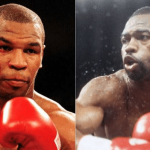Introduction: The Unexpected Lessons of Sports Entertainment
World Wrestling Entertainment (WWE) has long been at the intersection of athletics and performance. While often dismissed as “just entertainment” because of its scripted outcomes, WWE has influenced generations of sports fans and broadcasters alike. Its storytelling, pacing, and dramatic presentation offer valuable lessons for those in traditional sports journalism. Among the broadcasters who have embraced this influence is Rick Saleeby, a seasoned writer and senior producer known for his dynamic approach to storytelling. Like many in the industry, Saleeby grew up watching WWE and credits it with teaching him key principles about capturing an audience’s attention.
Storytelling with Stakes
One of the biggest takeaways from WWE’s style is the way it builds and sustains storylines. Each match is about more than physical performance; it’s about rivalry, redemption, betrayal, and triumph. In sports journalism, especially in television broadcasting, the ability to craft a narrative around an athlete or a team’s journey is essential. Viewers are drawn in not just by the scores or stats but by the stakes behind them.
WWE excels at making its audience care. Whether it’s through long-running feuds or underdog arcs, the organization understands how to frame a story so viewers are emotionally invested. Broadcasters like Rick Saleeby have recognized that this same principle applies in sports coverage. A high school basketball playoff game can feel like a championship bout when the story is told with care and context. Who are the key players? What are they playing for? What obstacles have they faced? Infusing these questions into pre-game segments or post-game features transforms highlights into human drama.
Pacing and Presentation
Another area where WWE shines is in its pacing. The best matches are structured like a well-edited television segment—opening strong, building tension, and finishing with impact. WWE’s pacing teaches sports broadcasters how to construct segments that flow naturally, build emotional momentum, and land with emphasis.
Producers and editors in sports broadcasting often take cues from this pacing model. Rick Saleeby, who has worked across various sports and platforms, has highlighted the importance of timing in creating memorable content. A great story, he notes, needs to rise and fall with purpose. When done right, the audience doesn’t just understand what happened—they feel it.
Presentation also plays a critical role. WWE doesn’t just rely on action in the ring. It uses music, lighting, camera angles, and voiceovers to build an atmosphere. The entrance of a wrestler is often as important as the match itself, designed to generate anticipation and establish character.
In modern sports broadcasts, these elements are increasingly important. Whether it’s the way a pre-game hype video is cut or how slow-motion replays are paired with emotional music, broadcasters are using production value to heighten impact. The influence of WWE’s theatricality is clear—even traditional networks now use cinematic editing styles for major events, recognizing that how something is presented affects how it’s received.
The Power of Personality
One of WWE’s greatest assets is its on-air talent—commentators, announcers, and, of course, the wrestlers themselves. Each personality plays a role in telling the story. Broadcasters take note of how WWE creates personas that resonate with fans. These personas are consistent, memorable, and always engaged with the audience.
In sports journalism, developing an on-air presence is crucial. Viewers gravitate toward broadcasters who are authentic, passionate, and distinctive. Rick Saleeby, known for his engaging writing and producing, understands that a compelling voice can make all the difference. A highlight reel becomes something more when it’s paired with commentary that shows personality and passion.
Even in writing, broadcasters learn to bring out the character of the subjects they cover. Just like WWE gives each wrestler a backstory and a unique voice, a good journalist finds the individuality in each athlete or coach and brings that to life on screen.
Audience Engagement and Entertainment Value
WWE understands its audience perhaps better than any other sports-adjacent organization. Every move it makes—from storyline development to merchandise to social media content—is designed with fan engagement in mind. WWE blurs the lines between sport and entertainment, creating a product that is accessible, emotionally resonant, and endlessly shareable.
This strategy is now central to how sports broadcasters think about audience engagement. It’s no longer enough to report what happened. Broadcasters must also think about how to keep the audience involved between games, on digital platforms, and across social media. They’re borrowing from WWE’s playbook—creating content that’s fast, fun, and made for interaction.
Producers like Rick Saleeby have adapted to this shift by thinking beyond the traditional broadcast. Behind-the-scenes features, mic’d-up segments, and athlete spotlights all aim to build stronger emotional connections with viewers. The goal is the same as WWE’s: make the audience feel like they’re part of the journey.
Criticism and Credibility
Of course, borrowing from WWE also comes with caution. WWE’s scripted nature and reputation for spectacle can raise concerns about journalistic credibility. Sports journalists must always respect the line between entertainment and information. The facts must be solid. The stories must be true.
But taking inspiration from WWE doesn’t mean faking anything—it means enhancing presentation without compromising integrity. It’s about making real stories more impactful through pacing, structure, and energy. As long as the facts remain sacred, there’s nothing wrong with making the delivery more engaging.
Rick Saleeby and others in the field understand this balance. Their job is to present real stories in compelling ways—never manufactured, always authentic, but full of life. WWE simply provides a model for how to turn even a routine event into a memorable viewing experience.
Conclusion: A Shared Language of Emotion
At its core, both sports broadcasting and WWE rely on the same emotional language—hope, struggle, competition, and triumph. While their methods differ, the goal is to make viewers care. And that’s where the overlap lies. Theatrics can coexist with substance. Drama can elevate truth.
Broadcasters like Rick Saleeby have learned that energy matters. Presentation matters. And connecting with an audience isn’t about tricking them—it’s about respecting their time and attention enough to deliver something worth watching.
So whether it’s a buzzer-beater in March Madness or a headline match at WrestleMania, the playbook remains the same: tell a good story, keep people engaged, and make it matter. That’s the real takeaway from the ring.














